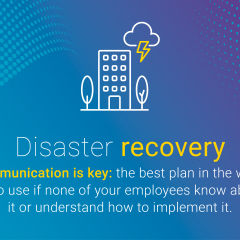The worldwide shortage of silicon chips: your questions answered
Maybe you’ve heard about the worldwide shortage of silicon chips, and are wondering how it started, when it might end, and how Silver Cloud has responded. Paul Sanderson, Business Change Manager, has the answers.
When did the problem start, and why?
It’s been developing for a while, and doesn’t have one particular cause. Global supply chains have been under pressure for some time, and new products have also greatly increased demand. For example, electric cars are obviously a growth area, and they use many more silicon chips than a conventional ICE car.
The shortage started to really get people’s attention in the tech world in early 2020. Then the pandemic happened, and demand for electronic goods went through the roof as so many people started working from home.
How has the shortage affected Silver Cloud?
It started to get serious around September 2020, when networking equipment like routers and switches became both harder to get and more expensive. These are essential pieces of equipment in any office. The router connects you to the internet. The switch combines all your computers into your internal network, and also connects that network to the router.
Our suppliers have done well to manage the situation, and we’ve been able to avoid any serious impact on our customers.
What have Silver Cloud done about it?
We’ve bought more networking equipment, and other key items like headsets, to make sure that we don’t run out of stock. For example, if we usually hold one or two of any particular item we might now have thirty of them.
Obviously that means that we’re now using a much greater percentage of our total storage capacity. In fact, for several months I had quite a few boxes under my desk!
We also avoid throwing out equipment unnecessarily. We try to re-use or re-cycle wherever possible, and we have thorough procedures in place for all the old equipment that we take out of customers’ offices when we install a new system. (Obviously, we also have to be very careful about data security.) In fact, we’ll be making some improvements to our recycling procedures soon, and we’ll let people know about that change as soon as it’s complete.
When will the shortage end?
Honestly, nobody knows for sure. The general consensus is that the shortage should ease towards the end of 2023, but we can’t be certain about that. Building more chip factories is not a quick process as they are expensive and complicated, and need highly trained staff. In the meantime, we’ll continue to manage the situation and ensure that our customers don’t suffer any negative effects.










